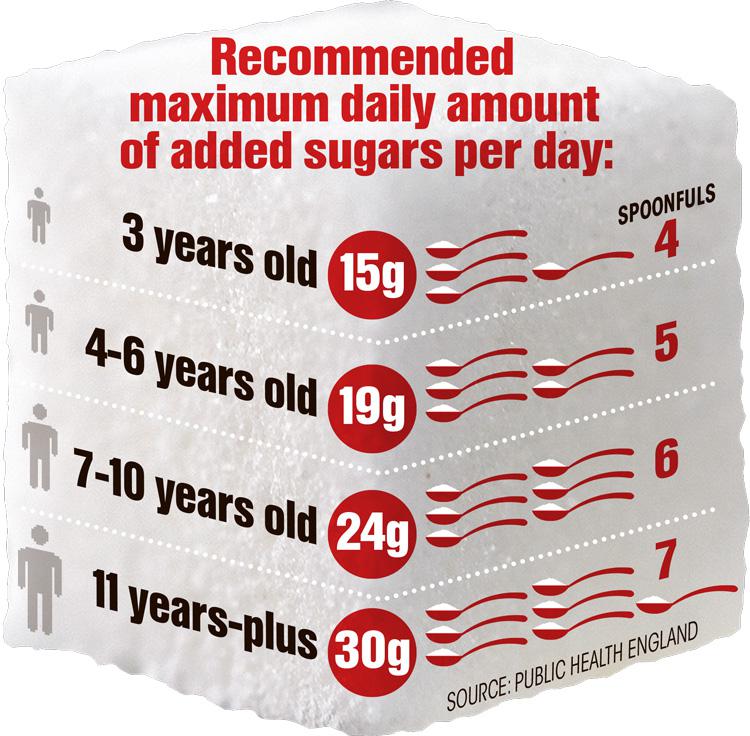
Carbohydrates provide energy for the body. They can also make us feel full. Carbohydrate is essential fuel for the brain as well as the central nervous system. These organs could not function properly without a steady supply glucose. The body can't function properly if there aren't enough carbohydrates. It will then turn to other energy sources like fat and protein. But a diet high in carbohydrates can actually be beneficial for people with diabetes.
There are two types of carbohydrates: simple and complex. Both types are possible to refine and are processed. The former are polysaccharides having at least three glucose molecule. These are found in foods high in fiber and starch. These nutrients include important vitamins, prebiotics, antioxidants and other nutrients. They can also regulate blood sugar and mood. Whole grains and legumes are excellent sources of complex carbs. This type of carbohydrate is the most important part of the daily diet.

Fiber is a carbohydrate that helps regulate cholesterol and promotes regular bowel movements. Starch is one type of carbohydrate. Some foods are considered starchy while others are fibrous. However, eating foods high in complex carbohydrates is essential for long-term health. Complex carbohydrates can help you maintain a healthy weight and protect your body against type 2 diabetes and cardiovascular disease.
Fortunately, there are many benefits of consuming complex carbohydrate. Complex carbohydrate are slow to digest, and contain a wealth of vitamins or minerals. It can help with fat metabolism and prevents the body using protein as energy. It aids the brain in maintaining its memory and mood. And as you might expect, it's a quick source of energy, so it's worth trying them!
Another way to get more carbohydrates is to eat a variety of whole, unprocessed foods. These foods are prized for their high nutritional content, and some are even considered "superfoods". They are all high in carbs and good for your health. Whole grains are the best sources of carbohydrates. In 2010, the Journal of American Dietetic Association published an extensive study that showed that eating whole grains increased fiber intake and the absorption of polyunsaturated fats.

Numerous studies have demonstrated that carbohydrates are beneficial for the body, promoting healthy body functions. In fact, carbohydrates are necessary for the metabolism of food. Human bodies require carbohydrates for proper functioning. Eating more fruits and vegetables is the best way of getting more. You should include fiber in your diet as it will help you feel full and avoid sugary foods. Your energy levels can be increased by including carbohydrates in your diet.
FAQ
What's the best diet?
The best diet for you depends on several factors, like your age, gender, weight, health conditions, and lifestyle habits. It is also important to think about how much energy you use during exercise and whether you like low-calorie foods.
If you are trying to lose weight, then you may want to try intermittent fasting. Intermittent fasting allows you to consume only certain meals per day, instead of eating three large meals. This may be a better option than traditional diets with daily calorie counts.
Studies have shown that intermittent fasting can improve insulin sensitivity and decrease inflammation. This could lead to improved blood sugar levels, and a lower risk of developing diabetes. Other research suggests that intermittent fasting may promote fat loss and improve overall body composition.
What is the healthiest lifestyle to life?
Healthy lifestyles include eating healthy food, regular exercise, good sleep, and avoiding stress. This will ensure that you live a long healthy life.
Small changes to your diet or exercise routine can help you start losing weight. Try walking for 30 minutes each day to lose weight. Or, if you want to get more active, take up swimming or dancing. You could also join an online fitness program like Fitbit or Strava that tracks your activity levels.
How can I lower my blood pressure
Find out the causes of high blood pressure first. Then you need to take steps to reduce this cause. This could mean eating less salt, losing some weight, taking medication, and so on.
Exercise is also important. If you don’t have enough time to exercise regularly, consider walking more often.
If you're unhappy with the amount of exercise you do, you might consider joining a fitness club. It's likely that you will want to join a gym with other people who are working towards the same goals as you. It's easier for you to exercise if you know that someone will be watching you at the club.
Are there 5 ways to have a healthy lifestyle?
Healthy lifestyles include eating right, exercise regularly, getting enough rest, managing stress, having fun, and eating healthy. Good eating habits include avoiding processed foods, sugar, unhealthy fats, and avoiding junk food. Exercise helps burn calories and strengthens muscles. Getting enough sleep improves memory and concentration. Stress management is a way to reduce anxiety levels and depression. Fun keeps us vibrant and young.
Do I need to count calories?
Perhaps you are wondering what the best diet is for you. or "is counting calories necessary?" The answer to this question depends on many factors, including your current health, your personal goals and preferences, as well as your overall lifestyle.
The Best Diet For Me: Which One Is Right?
My current health status, personal goals, preferences, and overall lifestyle all play a role in choosing the right diet. There are many options, both good and bad. Some diets work well for some people and others do not. What should I do then? How can I make the right choice?
These are the questions this article will answer. The article starts by introducing the many types of diets currently available. The pros and cons of each diet are then discussed. We'll then discuss how to choose which one is best for you.
Let's first take a look at different diets.
Diet Types
There are three main types. Low fat, high proteins, and ketogenic. Let's take a look at them all below.
Low Fat Diets
A low-fat diet reduces the amount of fats you eat. This is achieved by reducing saturated fats like butter, cream cheese, and other dairy products. You can replace them with unsaturated oils (olive oil and avocados) A low fat diet is often recommended for those who want to lose weight quickly and easily. This kind of diet could cause problems like constipation or heartburn and indigestion. Vitamin deficiencies can also occur if the person doesn't get enough vitamins through their diet.
High Protein Diets
High protein diets reduce carbohydrates to favor of proteins. These diets usually have higher amounts of protein than other diets. These diets are designed to build muscle mass and help you burn more calories. Unfortunately, they can't provide adequate nutrition for those who eat regularly. They are not suitable for all people because they can be restrictive.
Ketogenic Diets
Also known as keto diets, ketogenic diets are also called keto diets. They are high in fat and moderate in protein and carbs. Athletes and bodybuilders use them because they allow them more time and harder training without feeling fatigued. To avoid side effects such as fatigue, nausea, headaches, or other unpleasant side effects, you must strictly adhere to their instructions.
Statistics
- WHO recommends reducing saturated fats to less than 10% of total energy intake; reducing trans-fats to less than 1% of total energy intake; and replacing both saturated fats and trans-fats to unsaturated fats. (who.int)
- nutrients.[17]X Research sourceWhole grains to try include: 100% whole wheat pasta and bread, brown rice, whole grain oats, farro, millet, quinoa, and barley. (wikihow.com)
- According to the 2020 Dietary Guidelines for Americans, a balanced diet high in fruits and vegetables, lean protein, low-fat dairy and whole grains is needed for optimal energy. (mayoclinichealthsystem.org)
- The Dietary Guidelines for Americans recommend keeping added sugar intake below 10% of your daily calorie intake, while the World Health Organization recommends slashing added sugars to 5% or less of your daily calories for optimal health (59Trusted (healthline.com)
External Links
How To
What does "vitamin" actually mean?
Vitamins are organic compounds that can be found in foods. Vitamins are necessary for us to absorb nutrients in the foods we consume. The body cannot make vitamins; therefore, they must be obtained from food.
There are two types: water-soluble and fat-soluble vitamins. Water-soluble vitamins dissolve easily when they are dissolved in water. These include vitamin C (thiamine), Vitamin B1 (riboflavin), Vitamin B2 (riboflavin), Vitamin B3 (niacin), Vitamin B6 (pyridoxine), Vitamin C, B1 (thiamine), Vitamin B2 (riboflavin), Vitamin B3 (niacin), and Vitamin B6 (pyridoxine). Fat-soluble vitamins are stored in the liver, fatty tissue and kidneys. Vitamin D, E, K and A are some examples.
Vitamins can be classified by their biological activity. There are eight major groups of vitamins:
-
A – Essential for normal growth, and the maintenance of good health.
-
C - essential for nerve function and energy generation.
-
D - necessary for healthy bones and teeth.
-
E - Required for good vision & reproduction
-
K - Essential for healthy muscles and nerves.
-
P – vital for building strong bones.
-
Q – aids digestion of iron and iron absorption
-
R - Red blood cells are made from red blood cells.
The recommended daily allowance for vitamins (RDA) varies based on gender, age, and physical conditions. The U.S. Food and Drug Administration (FDA) sets the RDA values.
For adults aged 19 and older, the RDA for vitamin B is 400 micrograms daily. Pregnant mothers need 600 micrograms per days because it is vital for the development and growth of their baby. Children ages 1-8 require 900 micrograms per day. Infants under one year of age require 700 micrograms per day, but this amount decreases to 500 micrograms per day between 9 months and 12 months of age.
Children between the ages of 1-18 need 800 micrograms per daily for obesity, while children overweight require 1000 micrograms. Children underweight or obese will need 1200 mg per day.
2200 mg of vitamin A per day is required for children aged 4-8 who have been diagnosed by anemia.
2000 micrograms daily is required for adults over 50 to maintain their general health. Mothers who are pregnant, nursing, or have a high nutrient need will require 3000 micrograms a day.
Adults over 70 need 1500 micrograms daily, as they lose 10% of their muscle every ten years.
Women who are pregnant or lactating need more than the RDA. Pregnant women require 4000 micrograms daily during pregnancy, and 2500 micrograms every day after birth. Breastfeeding mothers need 5000 micrograms per day when breast milk is being produced.